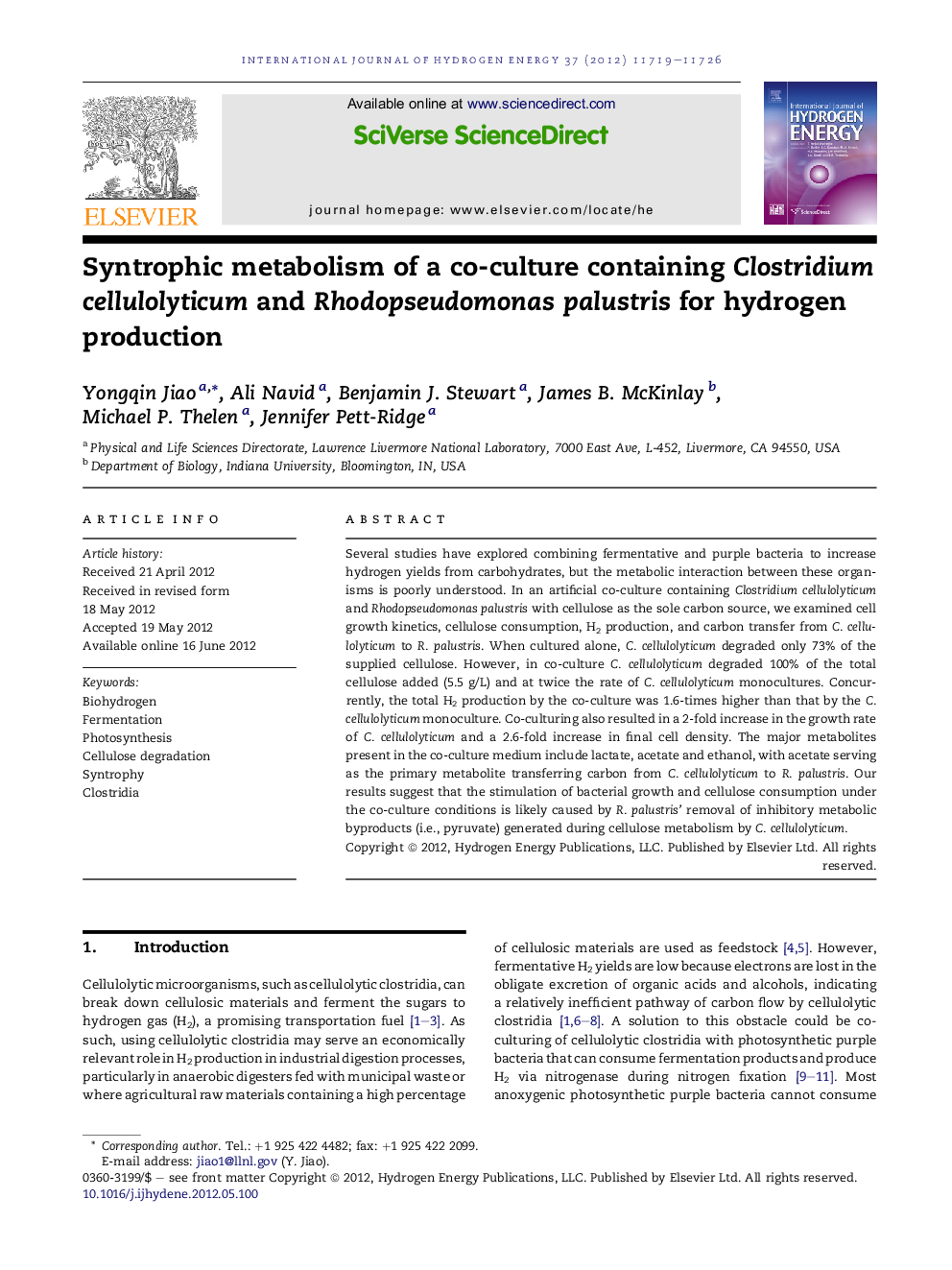| کد مقاله | کد نشریه | سال انتشار | مقاله انگلیسی | نسخه تمام متن |
|---|---|---|---|---|
| 1275040 | 1497553 | 2012 | 8 صفحه PDF | دانلود رایگان |

Several studies have explored combining fermentative and purple bacteria to increase hydrogen yields from carbohydrates, but the metabolic interaction between these organisms is poorly understood. In an artificial co-culture containing Clostridium cellulolyticum and Rhodopseudomonas palustris with cellulose as the sole carbon source, we examined cell growth kinetics, cellulose consumption, H2 production, and carbon transfer from C. cellulolyticum to R. palustris. When cultured alone, C. cellulolyticum degraded only 73% of the supplied cellulose. However, in co-culture C. cellulolyticum degraded 100% of the total cellulose added (5.5 g/L) and at twice the rate of C. cellulolyticum monocultures. Concurrently, the total H2 production by the co-culture was 1.6-times higher than that by the C. cellulolyticum monoculture. Co-culturing also resulted in a 2-fold increase in the growth rate of C. cellulolyticum and a 2.6-fold increase in final cell density. The major metabolites present in the co-culture medium include lactate, acetate and ethanol, with acetate serving as the primary metabolite transferring carbon from C. cellulolyticum to R. palustris. Our results suggest that the stimulation of bacterial growth and cellulose consumption under the co-culture conditions is likely caused by R. palustris' removal of inhibitory metabolic byproducts (i.e., pyruvate) generated during cellulose metabolism by C. cellulolyticum.
► The syntrophic metabolism of a bacterial co-culture was investigated.
► The total amount and rate of cellulose consumption were increased in co-cultures.
► The total amount and rate of hydrogen production were increased in co-cultures.
► Acetate was the major metabolite for carbon transfer in the co-culture.
► Pyruvate consumption boosted cellulose degradation in co-cultures.
Journal: International Journal of Hydrogen Energy - Volume 37, Issue 16, August 2012, Pages 11719–11726